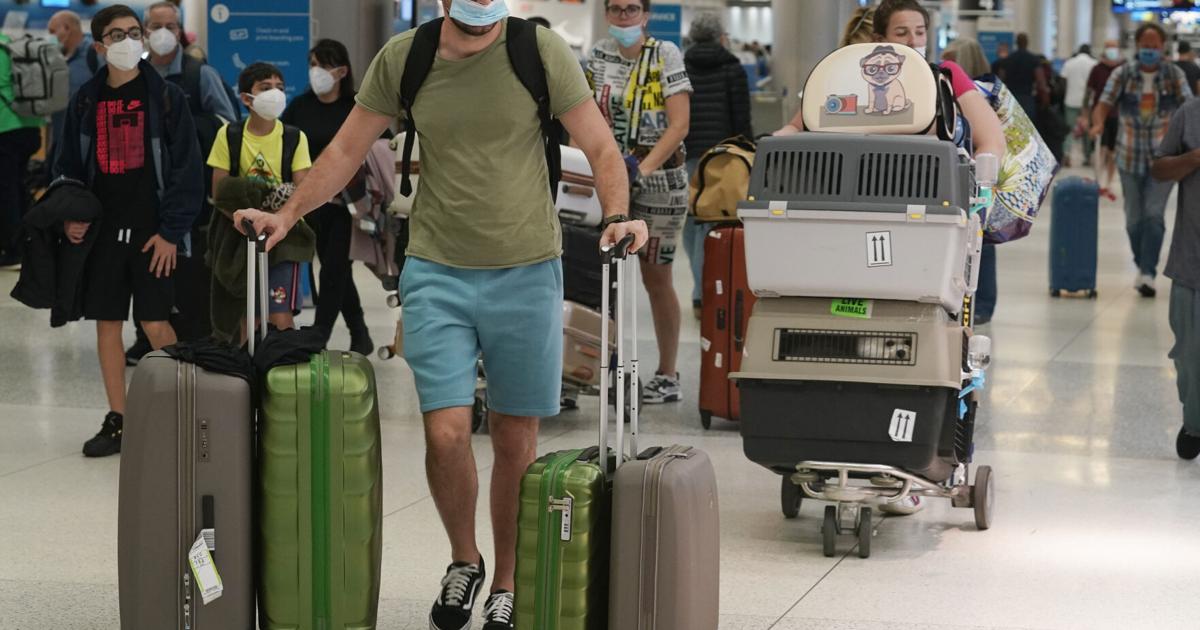[ad_1]
More than 1,000 hours of containment measures linked to the coronavirus were enough to confirm the urgency of improving housing conditions in Spain, especially with regard to properties over 10 years old.
Many homes in Spain lack ventilation and natural light, compromising comfort and health. Balconies are rare in old and new buildings, and many interior apartments do not have street views. In addition, some apartments are so small that there is little room for exercise or telecommuting. But this is how millions of Spaniards live, whether they are tenants or owners of their homes.
If we are going to spend more time at home, we will need new spaces
Architect Julio Touza
“We architects must imagine and build houses that make natural light, ventilation and simple and comfortable movement a priority, regardless of the type of housing,†explains architect Carlos Lamela.
Meanwhile, Sonia Hernández-Montaño, health and architecture coordinator at the Catalan Association of Architects, predicts that after the coronavirus crisis, “We will value the flexibility of [space] distribution, natural light, views, cross ventilation capacity, acoustic factors and the existence of private outdoor spaces.
The coronavirus pandemic has highlighted various housing gaps and those who can may consider moving once the lockdown, in place since March 14, is over, especially if they have rented substandard housing. This, in turn, will mean that many homeowners will have to put in more effort if they are to continue making a profit. Homeowners, on the other hand, may want to redesign their home because, Lamela says, it’s often a matter of design rather than resources.
The lockdown has drawn particular attention to balconies – or their absence in areas like Madrid, which has been hit hardest by the pandemic. The owners who have integrated these spaces into an apartment in order to gain a few additional meters will now regret their actions because the demand for housing with balcony or garden has increased by 26% since the start of the quarantine, according to the real estate site Servihabitat.
“It is incomprehensible that balconies made it possible to be closed in Madrid,” says Lamela. “It’s not something that’s happening in just any other city or country and it’s a real cancer in our urban planning.” Not only do balconies provide a small outdoor space, but they also protect building facades from sun and rain. According to architect Julio Touza, “The balcony will gain in importance in size and quality. One of the lessons we have learned is to value this “intermediate spaceâ€, this lung which is located between the street and the apartment.
Madrid building regulations make balconies a fair game for development. Therefore, they are often replaced or minimized, a practice that does not occur in the regions of Valencia or Catalonia, where developers are encouraged to make them a feature.
The whole subject of balconies and terraces is of great interest to architects who hope that the municipal decrees will be revised at the end of the crisis in order to promote “these spaces of respite” as evoked by José Antonio Tenorio, chief scientist at Eduardo Torroja-CSIC Institute of Construction Sciences.
The demand for housing with balcony or garden has increased by 26% since the start of the quarantine, according to the real estate site Servihabitat
More difficult to remedy are the shortcomings of the interior apartments whose windows usually face the interior patio of the building, which means that 7.9% of Spaniards go through their forties without even a view of the street. Of all the regional capitals in Spain, Madrid has the highest percentage of indoor apartments (20.3%), followed by Bilbao and Cadiz, according to the property platform Idealista. “This should be addressed through urban rehabilitation policies,†Tenorio explains.
The property of tomorrow will require flexible designs, making it easy to easily add or remove a room, as well as the integration of new spaces that can be used for telecommuting and leisure activities, adapting to an out of town culture. the crisis and that is very likely to stay. .
“If we are going to spend more time at home, we will need new spaces,” explains Touza, who offers a return to the designs of the bourgeois houses of the late 19th and early 20th centuries in the Salamanca district of Madrid. or in the Eixample district. of Barcelona, ​​where there is usually a small library or an office next to the living room. “We need to consider open, versatile and integrated spaces,†he says.
Versatility really comes into its own when work, play and exercise are more important at home. Gonzalo Pardo, director of Gon Architects on the Houzz platform, believes the biggest change will be the inclusion of spaces designed specifically for telecommuting, and rooms that can be reconfigured depending on the time of day.
Such an evolution in demand has already been anticipated by the new real estate promotions which market apartments with terraces and offices and coworking spaces in the building for residents. “The confinement experience will increase the size and use of common spaces and improve neighborly relations,” said Teresa Marzo, general manager of developers’ affairs, Via Celere.
Health problems
Another issue that the pandemic has signaled is the importance of building with health conditions in mind. Only 2.3 million dwellings are built according to the Technical Building Code, which entered into force in 2006 and promotes better quality construction. According to Enrique Rovira-Beleta, director of the accessibility department at Barcelona UIC School of Architecture, the remaining properties lack proper natural light, ventilation and access. He believes that as the concept of a home changes, regulations will change to ensure that space in existing homes is better distributed, lit and ventilated. How? ‘Or’ What? “By widening windows, making some bathroom walls semi-transparent, and widening hallways and doors to allow wheelchair access,†he says.
Ventilation will be more important than ever, whether it’s natural cross ventilation with opposing windows to let the breeze through the apartment or ventilation using a device to suck the air in. polluted air from the inside and replace it with filtered air from the outside.
The next development on the cards is automated access to bypass touchscreen systems like enhanced facial and voice recognition for doors, handles and elevators. “It is an airport architecture designed precisely according to hygiene criteria”, explains Touza.
In the medium term, the use of antimicrobial materials could even be promoted. Pablo Muñoz, healthy building expert and managing director of the architectural firm Espacios Evalore, talks about photo-catalytic paint and antimicrobial handles, furniture and countertops. “Plants help maintain an indoor relative humidity of between 40% and 60% which, according to some studies, helps to reduce the transmission of the coronavirus,” he adds.
english version by Heather galloway.
[ad_2]

/cloudfront-eu-central-1.images.arcpublishing.com/prisa/BMLAYW64EZDUHKTXZ6ZQHV5WCY.jpg)
/cloudfront-eu-central-1.images.arcpublishing.com/prisa/XUXTINYVZEOMO5YYOA6UOMGAFE.jpg)
/cloudfront-eu-central-1.images.arcpublishing.com/prisa/G5VGGYQ3Y2CBIGFD2XOMHTPZ6M.JPG)
/cloudfront-eu-central-1.images.arcpublishing.com/prisa/YICG4UUPGBGG5CNHHW4HYQYBNE.jpg)







No Comment